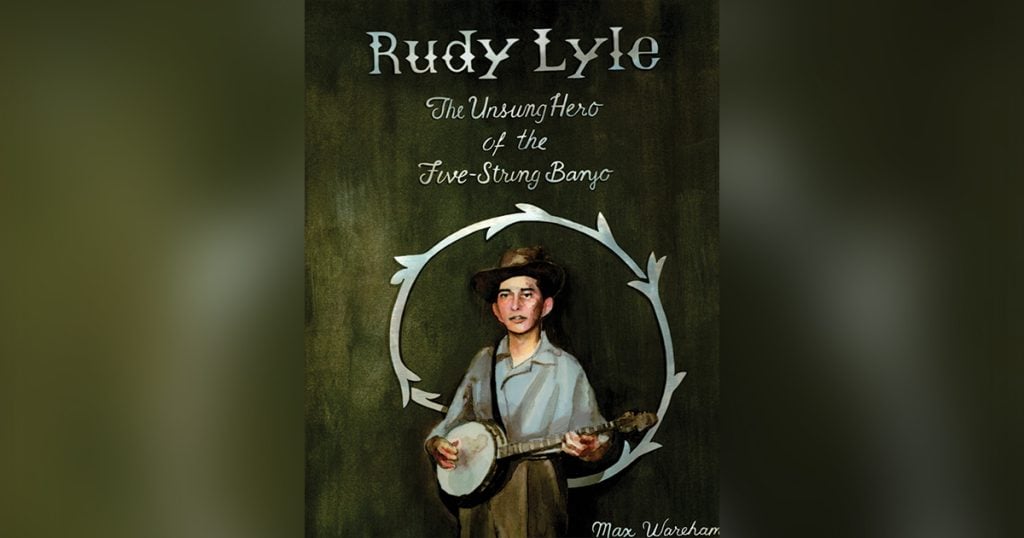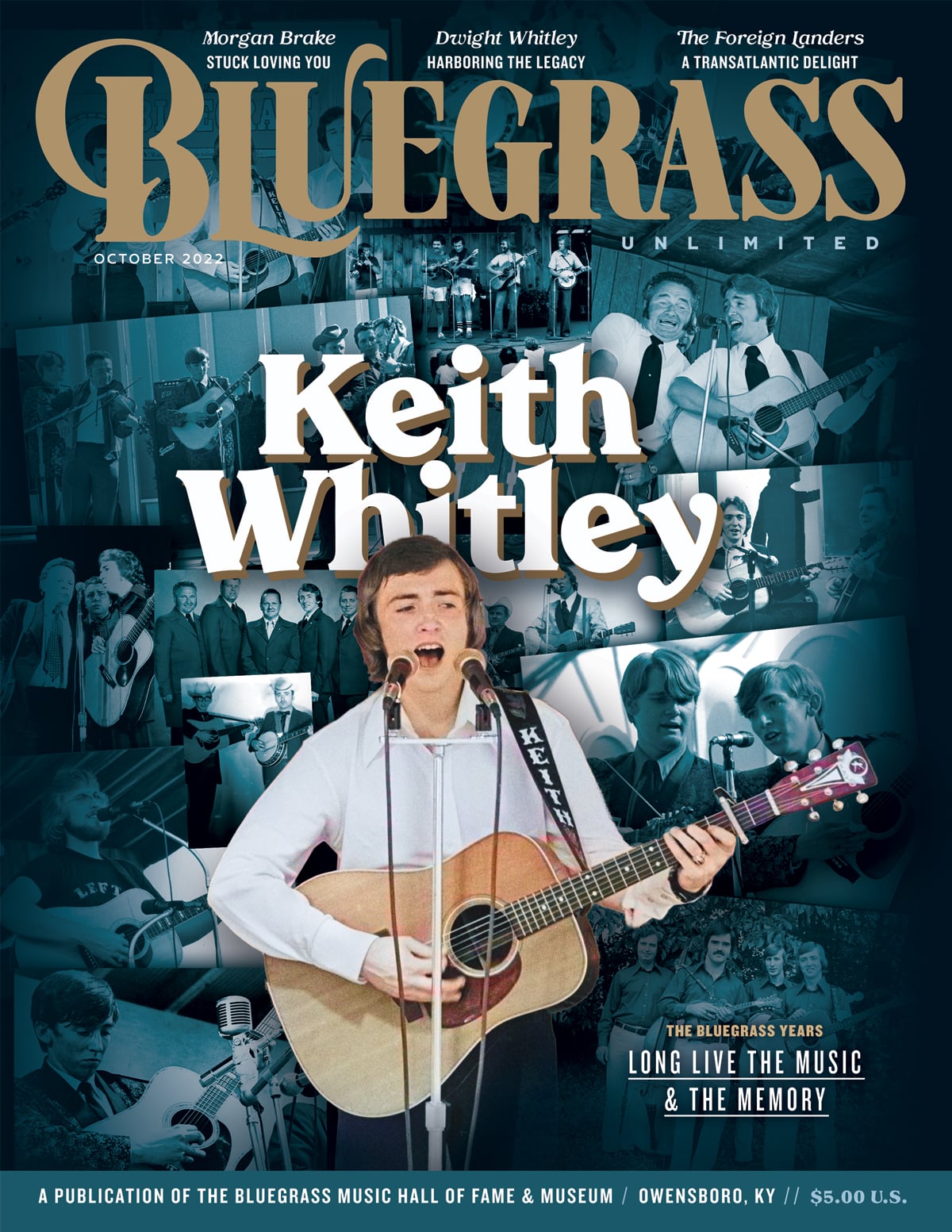Rudy Lyle: The Unsung Hero of the Five-String Banjo
Soft-cover. 147 pages. Includes banjo tablature. Illustrations by Giselle Harrington
The Bill Monroe band of Blue Grass Boys that included Lester Flatt and Earl Scruggs (1946-1947) has often been called the “greatest bluegrass group of all time.” But, as Tony Trischka says in his intro to Max Wareham’s new book, Rudy Lyle: The Unsung Hero of the Five-String Banjo, “for my picking money, second in ranking would be Bill’s early ‘50s band featuring Jimmy Martin on guitar…and Rudy Lyle on banjo.”
To banjo players, Rudy is probably best known for his magnificent and eclectic break to “Rawhide,” which, Tony says, includes a G13 chord! (Who knew?) But he also played on a number of other classic recordings including “Bluegrass Ramble,” “Little Georgia Rose,” “Blue and Lonesome,” “White House Blues,” “Sugar Coated Love,” “New John Henry Blues,” and “On And On.” (YouTube is your friend. Listen up!)
Bill Monroe himself called Rudy’s playing “powerful,” and when Max asked Alan Munde to describe Rudy’s playing, Alan said, “‘Live wire’ is a good term. Just plug him in and it’s just this bare hot lead.” It was historian Charles Wolfe who called Rudy “one of the great unsung heroes of Monroe’s post-Scruggs sides…”. And with this book, someone—a fine young banjo player himself—is finally singing Rudy’s song.
Max Wareham, currently a member of the Peter Rowan Bluegrass Band, has crafted a delightful and informative book about Rudy’s life and his banjo style. But this is not just a book for banjo players. Max offers some insightful thoughts about the dark and deeply personal songs that Bill was writing during this period: “The Old Kentucky Shore,” “Memories Of Mother and Dad,” and “The Little Girl And The Dreadful Snake.” He suggests that these stories are “undoubtedly cut from the same cloth as [those of] the great Southern Gothic writers.”
The book opens with a short biography of Rudy’s life, which mentions that Rudy’s service in Korea affected him profoundly and badly damaged his hearing. This resulted in Rudy’s being dissatisfied with the volume of his banjo which led to his prying part of the rim off with a screwdriver. Max says, “It is not a stretch to understand the destruction of his banjo after the war as a metaphor for the trauma he endured in Korea…” There is more information about Rudy’s life in the article Doug Hutchens wrote for Bluegrass Unlimited in 1985, which is reproduced here.
The interviews that Max conducted with Bill Emerson and Sonny Osborne are especially poignant, coming as they did only months before each of these great men died. He also interviewed Alan Munde, Butch Robins, Joe Drumright, Jr., Doug Hutchens, and Rudy’s brother Lyle. Max asks direct, pertinent questions and gets thoughtful answers. Sonny, being Sonny, says, “Rudy had the worst-tone banjo there has ever been in history.” But then adds, “He was a hell of a player.” Butch Robins reflects that Rudy “didn’t have the smoothness…that Earl had, but he had these neat interpretive takes…He was just exceptional in his inventiveness.” Bill Emerson says, “Next to Earl Scruggs, it’s Rudy Lyle for me.”
And now a word for all you banjo players. Max has tabbed out all the recorded breaks Rudy took with Bill Monroe. He has also included tabs from several live shows and a section on specific backup licks. Sonny himself advised listening to the backup lick Rudy does in “Blue and Lonesome” behind the words “When I hear the whistle blow” in the first chorus. He said, “It’s simple but it absolutely fits the tune.” My favorite backup lick in that song comes after the words “The winds they moan and cry” in the second verse. A little “chirping” sounds on the banjo. Max has tabbed out both of these licks as well others from this song and others and has listed the exact time where those licks are played during the song.
Max’s tabs are excellent—clear and easy to read—and the bonus is he gives you informative commentary about what’s going on in the tabs as to what Rudy is doing and why it’s so cool. He even points out licks that might possibly have been mistakes! But mistakes that work! As in the song “On My Way Back To The Old Home.” It’s obvious that Max has done his homework and has spent hours and hours listening to Rudy’s breaks and playing them himself. You can watch a demo of each break in the book at maxwareham.com. And finally, for all banjo geeks, he includes a section titled “Finding Rudy’s Banjo.” With photos.
Tony Trischka says, “The book is a feast for the eyes and fingers.” I agree! Thank you, Max, for listening to the Muse that led you to do this book and thanks for all the hard work you put in. I know it was truly a labor of love. I hope this book leads readers to many happy hours of listening to Rudy play. Highly recommend to any lover of bluegrass, old or new.

